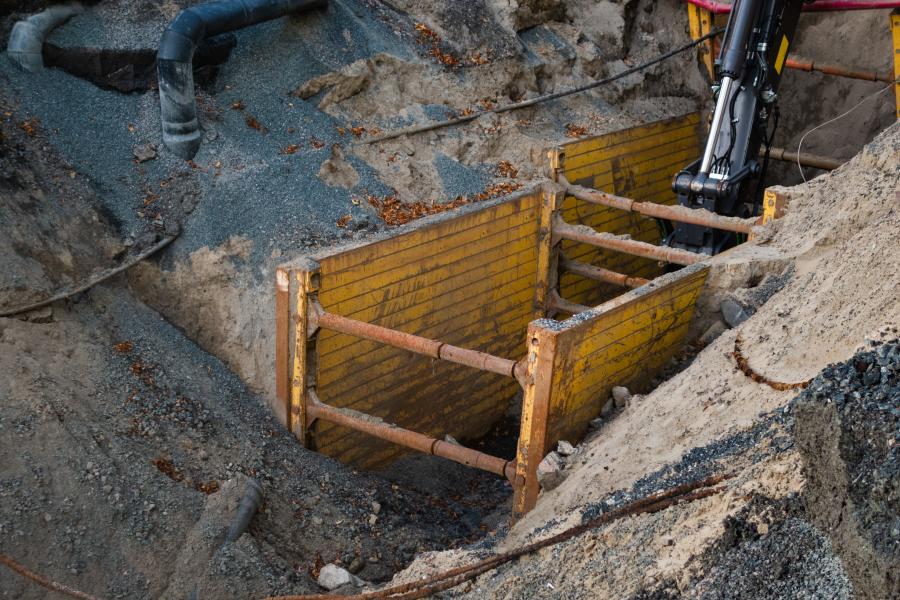Digging trenches is an important element of many constructions. These trenches are used to lay telephone lines, pipes, as well as any other tubular structure that must be installed deep underground, including oil rigs. Trenching can sometimes become very strenuous work as the soil used in these areas contains excessive levels of moisture. This can make it challenging not only to get rid of all dirt and debris around objects but also to keep yourself secure during the procedure as accidentally exposing your the skin can result in severe injury.
Trench boxes are required for any type or repair that involves accessing the ground. They are able to keep the ground from falling down based on the material and soil quality. Trench boxes are constructed out of steel/aluminum frames that temporarily secure them before excavation starts. The grout is placed between two layers should it be necessary, ensuring that it is not cracked when installed at the level of the site.

Pre Installation
It is important to identify any risk that might be present prior to excavation. It is crucial to determine the type of equipment used and the number of people who will require access. Also, think about different methods that could have been employed to complete the task without placing life or limbs at risk (such as techniques that are minimally invasive). An assessment of risk must be completed prior to the excavation inspections to ensure that any potential risks can be easily identified prior to the event; this will help prevent any unanticipated complications later down the line.
The depth of the trench is important to consider too. If you’re working with 5 feet wide of trench, then support either from slope or shoring may be required based on how large it becomes. However, if your 20-foot deep hole requires an engineering design upgrade because there are no straight sides close to either end. This means that any building above ground must also account for an increased risk in foundation movements due to direct back down into their excavation site.
The trench should be accessed by a ladder, steps, or a ramp. There should be safe access within 25 feet of the workers at all times in case the need for emergency assistance arises. In addition, you could also be necessary to check for low oxygen levels or toxic gasses through specially-designed boxes referred to as “trench boxes.” The installation of these devices is simple, but they may increase the risk of stacking them on top of each other because you don’t know how high the piles can reach to their vulnerable bottom.
Care of the trench
1. For any signs of movement or damage, make sure to check the trench box on a regular basis.
2. If working on site everyone should wear protective gear and wear a steel-toed boot as well as high-visibility clothing.
3. The best practice is to keep any heavy equipment or other tools at least three feet away from the trench edge.
Extraction
The process of installing a trench box will likely be more difficult than digging it out because the ground around it shifts. For the purpose of extraction, you may make use of chain slings. A crane that is overhead can also be used.
1. Straight Pull Straight Pull fundamental of all extraction methods. Simply connect your sling to two points, then pull it out, without fumbling around with excessive force or unnecessary movements.
2. Half Pull: A half-pull is used to attach the trench box to one side , and to lift as much as possible. This will permit you to take away any dirt or debris without causing damage to your garden.
3. Single Pull: You attach one leg of chain to the lifting or extraction point. Each panel will be raised by turns. It is possible to remove it using your trusty pull.
For more information, click shoring trench box